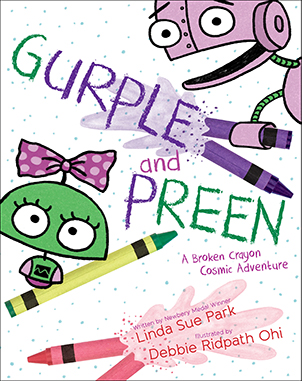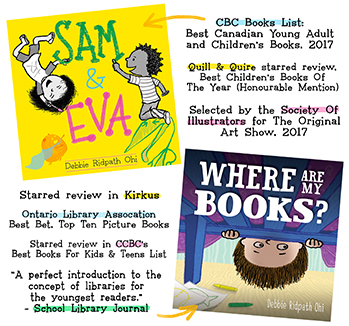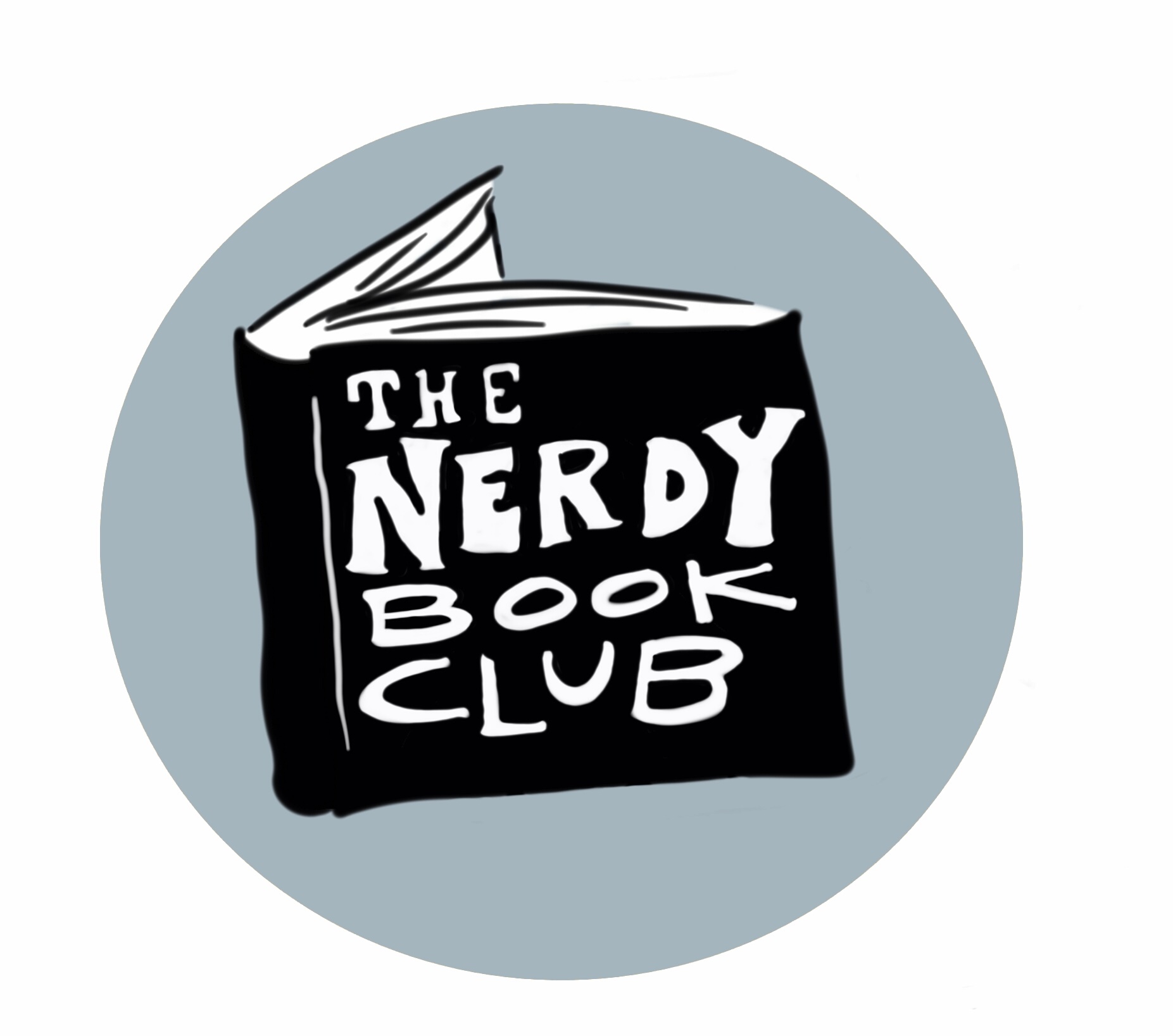
I first came across Kelly Light's work online. Not only did I love her fun character sketches, but I was also drawn to her writing -- edgy, fun and bubbling over with enthusiasm for all things kidlit. Then I met her at an SCBWI conference and found she was the same in person!
If you haven't already, I strongly encourage you to read Erin O'Shea's great KidLitArtists.com interview with Kelly about how Kelly went from animation/marketing to being a fulltime children's book writer and illustrator.
Kelly is also one of the most productive freelancers I know, with many projects on-the-go and in the pipeline:
 The Quirks, Welcome to Normal - Spring 2013 Bloomsbury. Author: Erin Soderberg, Illustrator: Kelly Light. Facebook Page.
The Quirks, Welcome to Normal - Spring 2013 Bloomsbury. Author: Erin Soderberg, Illustrator: Kelly Light. Facebook Page.
Elvis and the Underdogs - Spring 2013 Balzer and Bray. Author: Jenny Lee, Illustrator: Kelly Light. Book website. Facebook page.
The Quirks: Circus Quirkus - Spring 2014 Bloomsbury. Author: Erin Soderberg, Illustrator: Kelly Light.
Elvis and the Underdogs: Secrets, Secret Service and Room Service - Spring 2014 Balzer and Bray. Author: Jenny Lee, Illustrator: Kelly Light.
Louise Loves Art - Fall 2014 Balzer and Bray. Author & illustrator: Kelly Light.
Lola Knows a Lot! - Fall 2015 Balzer and Bray. Author: Jenna McCarthy, illustrator: Kelly Light.
plus three more picture books she can't talk about yet. :-)
You can find out more about Kelly at her website, Facebook and Twitter. She is represented by Elizabeth Harding, Curtis Brown Ltd.
 Q. How did you start illustrating middle grade novels?
Q. How did you start illustrating middle grade novels?
I was checking my emails, the night that I gave my first workshop on character design at the NESCBWI conference in April, 2012... when I spotted an email from Bloomsbury. I was excited to read that they and the author of The Quirks: Welcome to Normal both were interested in me illustrating this new Middle Grade chapter book. I did not respond that night. I was too shocked. The next day I whispered to someone..."I just got my first offer." They exclaimed ,"What are you waiting for!?"
S0, I went home and typed that I would LOVE to read it. This would be my first book with a bigger publishing house.... I was excited to read my first manuscript. I sat down on the living room couch, which is where I love to read in the quiet... put my feet up... read the first chapter... and fell in love with the quirky characters.
 Sketch for THE QUIRKS: WELCOME TO NORMAL. Copyright © Kelly Light.
Sketch for THE QUIRKS: WELCOME TO NORMAL. Copyright © Kelly Light.
The Quirks: Welcome to Normal by Erin Soderberg was so imaginative, I could not wait to start drawing the images that were exploding in my brain.
I signed on for that project and started sketching.
 Copyright ©2013 Kelly Light.
Copyright ©2013 Kelly Light.
One month later, I was on a plane to Florida and got another email. This time from Balzer and Bray, and imprint of Harper Collins. Would I sketch some dogs with "personality". They were looking for an illustrator for a middle grade chapter book as well. I drew during the entire plane ride. Because I was going on vacation- all of the dogs that I drew became characters that in my head worked at a surf shop... They were silly. But it did the trick and I got the book!
 Sketches from LOUISE LOVES ART. Copyright ©2013 Kelly Light.
Sketches from LOUISE LOVES ART. Copyright ©2013 Kelly Light.
Elvis and the Underdogs by Jenny Lee was underway as well. It stars a boy named Benji who is need of a service dog. When that dog arrives, it is a big Newfoundland named Elvis. It's a book filled with heart.
The two chapter books kept me busy through the summer and the fall with character design, cover design, cover color concepts and interior sketches. During that time I also was lucky to sign 3 picture book deals. I learned to juggle- fast.
 Character sketch for LOUISE LOVES ART. ©2013 Kelly Light.
Character sketch for LOUISE LOVES ART. ©2013 Kelly Light.
Working on "MG" - or middle grade. Is a lot of fun. Drawing for an older audience allows for some broader humor and a lot of detail. The black and white art for me stays fresh as it's pure drawing. I loved MG as a kid. Most of my all time favorite books are MG. It was a drawing frenzy of happiness as I sketched the interiors. It may just be my sweet spot as an illustrator. Having said that...
Middle grade illustration is a lot of work in a shorter amount of time. The deadlines come quick. The covers need to be done first so that the books can go into the catalogs and out to the buyers. The print time is a much quicker turn around, so most publishers will have these books in kids' hands with in a season. Start to finish- 6 months - top.
Have whiplash yet?
I do.
 Early character design sketches for THE QUIRKS. Copyright © Kelly Light.
Early character design sketches for THE QUIRKS. Copyright © Kelly Light.
Then... there is a good chance, if the first book does well in sales..you have a series on your hands. Suddenly you have to see your life blocked out books and books ahead. Deadline to deadline. As if your life is now a chapter book itself. Good fortune? Yes.... but B-U-S-Y.
The relationships that I have built with both of my art directors are very important because of the short and firm deadlines. They say when they need it and I say if it's possible with in my staying alive for me to do that. We all have really gotten to know how each other works and thinks..and recovers post deadline.:)
 Cover image for Elvis and the Underdog Facebook page.
Cover image for Elvis and the Underdog Facebook page.
So- knowledge is power, as School House Rock taught us in the 70's. Know before you get in... MG is fun, fast and furious.
Now that both first chapter books are out, it is delightful. I am already finishing the covers on the second books in both series.
I have had contact with the author of The Quirks, Erin Soderberg, She and I connected when she contacted me to tell me how much she loved the illustrations and I told her how much her words hit my imagination.
As far as how I create the art for the MG chapter books, I work in Photoshop. Time constraints make this the easiest way to go. Revisions- tweaks... quick fixes don't get any easier than working in layers. I sketch character design by hand tho... something about paper and pencil and that initial spark... it all just goes together.
Q. What's your typical work day?
 Mondays - I do the administrative stuff and try to plan out the week. The least amount of art gets done on a Monday. Friday seems to be my most productive day.. which weirds me out. Maybe it's because I know during the weekends it's harder to accomplish a lot.
Mondays - I do the administrative stuff and try to plan out the week. The least amount of art gets done on a Monday. Friday seems to be my most productive day.. which weirds me out. Maybe it's because I know during the weekends it's harder to accomplish a lot.
Each Day is kinda like this: Wake up. This is not an easy task even when I have not been up for a deadline. I wake up around 6-6:30. I get my 13 year old (who moves even slower than I do in the morning) - off to school.
I do my social media in the mornings usually while I have coffee and egg whites and an English muffin. I am a creature of habit. I eat the same thing every morning. Then at 9 - I am off to the gym, 4 days a week. I think the amount of time I spend sitting on my tucchus is awful for me. So- this is non-negotiable time for me. (I do slip up right at a deadline tho..can't not sleep and go to spin class)
I come home and hit the work. I work until 2:45. Then I get the kid...and hope she has after school plans, so I can go back to work. Most days she does. I work until dinner. Notice I am not saying that I cooked that dinner. I am lucky if I have time to cook twice a week these days. I try to cook in large quantity so we have left overs, when I do. The other nights... it's every Light for themselves..
I go back to work from 7 until I can't stay up any longer. I try to take off Friday nights and Saturday nights. Altho, right before a deadline ... I have no idea what night it is so I just keep working..... food is brought to me.. I grunt. I devolve a bit.
Q. Could you describe your studio?
I work up in my attic.
The act of ascending those steps helps. Working in the house is a distraction, so I am happy to close the door and feel a bit in a world of my own.

Above my studio door, I hung pictures of people I really look up to. They all have 1 thing in common. They marched to the beat of their own drum. Followed their own path.

My studio is a bit messy right now...cause I am so busy... but I like to share a realistic picture of my journey...so here goes...

Above my head right now. My inspiration wall for Louise Loves Art. "You Are Here" - it's a message to myself. I get kind of lost in my work, in the flurry of how much work I have.. that I feel a bit disconnected from life. I hung that up a few weeks ago to look at. I also need to get a handle on what has happened and be really, really present and own it. I did this, it did not happen to me.
To my left right now:

Those manilla envelopes are all manuscripts. There's the finished Elvis book! A mock up of The Quirks diner mugs the author and I made for promotion, The cover mock up for Louise, an old radio, I collect them, my first reader and Richard Scarry, who I love.
To my right, right now:

That's my Cintiq. I got it a year ago- it makes work faster than drawing on a Wacom tablet. My revisions on Louise. My uke ... it's a de-stresser. I sing a lot.My clock, Spartacus...he has a name, and my favorite thing in the world- The Iron Giant.
Behind me:

My drafting table. Most of my sketching happens there.
Above my drafting table hangs:

This is how I feel these days . Like Charlie after the elevator ride... he has to get to work...and wear the heavy pumpkin colored top hat and make great chocolate.
Where I never sit:

This is my thinking chair... but now- it's covered in books by people I know! Which is thrilling!! Jane Yolen says..(I am paraphrasing) "In this business, if you can not be happy for the success of your friends, you have no business being in it."
My book shelves.... imploding:

TOYS!!!! Stuff! Dust!!
And Pepperland... I am a Beatles nut.

I have a dog, Jabba the Mutt and my daughter's cat, Jedi..who hang out up here allllll the time. Here's an old pic of them..kitten on the internet. Awww.

Q. What advice do you have for those interested in illustrating middle grade novels?
I think what I can say to those who wish to illustrate MG chapter books is - It's all about character. You are drawing for 7-11 year olds. These kids want to know the characters. This is the age when the characters are your friends. The characters help you get through some crazy changes in your life. They want to connect- SO be specific with the "WHO". WHO is the main character?... draw them so they feel real...like they could sit next to them at school. Who are the friends and the side kicks and the adults? They should all have something recognizable to the reader , just like in real life, no matter how unrealistic you may draw them. They should FEEL real. Also... bring THE FUNNY. This age loves to laugh. The illustrations in MG can really add humor and another layer to the text.

I am a true believer in Laughter is the best medicine- and this age group wants to laugh their way into and through their tweens...
Having some strong black and whites of the right age kids in your portfolio in REAL moments that happen in 4th grade- 5th grade. Braces. Awkwardness. Cliques start to form. Girls travel in packs. Bullying or standing up to it. School stress. Being bad at sports. Someone is an underdog. Science Fair explosions... There- I gave you some ideas!!
Advice from Kelly:
My "getting here " story is typical. I've met many people like me who tried for years and years to get published before they got their first book deal.
My "I've got book deals! "I had better learn to juggle fire while on a unicycle!?!" story.. is a little atypical. I currently have 10 books under contract.
 Sketch from LOUISE LOVES ART. Copyright © Kelly Light.
Sketch from LOUISE LOVES ART. Copyright © Kelly Light.
These days, I want to yell out my car window.. "Don't give up!", everywhere I go, but that's too simple. "Hang in there!" "Follow your passion!" -- they all are true but not enough to cross over and get books.
So let's talk turkey.
Do not waste time.
This is not a hobby. If you are serious about making childrens' books - take yourself and your work, seriously and have some serious fun doing it.
You must work it.
Work your butt off.
Sell the hell out of yourself.
Put your best foot, face and work forward.
Stop wondering what they want. Stop looking at other people's work. Make the art that is YOU. The art that you were born to make.
You were a 4 year old, a 2nd grader , a 4th grader.. that never left you. Just listen.. he/she's telling you exactly how it felt to be that age.
In the end - that's it in a nutshell.
Q. What are you working on now? Any other upcoming events or other info you'd like to share?
I am now finishing my first picture book as Author.Illustrator. It is called "Louise loves Art" w/ Balzer and Bray. It comes out fall 2014.

I have 3 picture books lined up behind that like planes on the runway at JFK. Everyone hope for me... I do better than JFK does.... at getting up in the air on time!

I am looking forward to school visits and talking to kids about the importance of "drawing". Most kids draw and at some point stop. I wonder how many kids these days have the time to . From being a Mom in this age of technology and over booked activities.. I worry.. no kids watch the clouds... and see rabbits or dragons. No kids steam up the back car window with their breath and draw with their fingers. No kids stop to pick dandelions..blow the seeds than tie the stems into shapes. The act of drawing is like visual meditation. So I wanna bring drawing back. That's my own hope for what my picture book will spark when I get the chance to talk to kids about expressing themselves. There's a line in my book, "I love art. It's my imagination on the outside." I wrote that before I wrote anything else. It's a motto and a mission statement.
--
You can find out more about Kelly at her website, Facebook and Twitter. She is represented by Elizabeth Harding, Curtis Brown Ltd.
TWEETABLE:
Curious about how middle grade novels get illustrated? @KellyLight offers insights & sketches: http://bit.ly/KL-quirk (via @inkyelbows) (Tweet this)
Advice to aspiring bk illustrators: Stop wondering what they want. Make YOUR art. - @KellyLight http://bit.ly/KL-quirk (Tweet this)
------------------------------
For more interviews, see my Inkygirl Interview Archive.














 Friday, June 28, 2013 at 11:59 AM
Friday, June 28, 2013 at 11:59 AM



























































